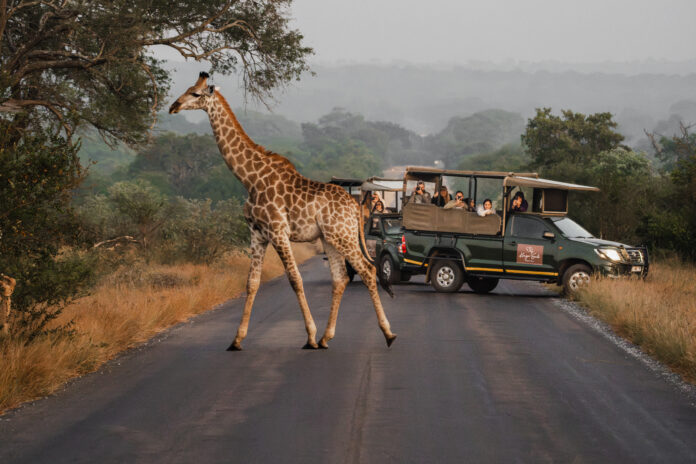There is no shortage of things to celebrate when it comes to our country’s rich history, heritage, landmarks and culture. Each year, just as we are greeted by the first warmer days of spring, millions of South Africans dust off their braai tongs and honour Heritage Month with Heritage Day, affectionately known to some as National Braai Day, on 24 September.
This year Heritage Month brings into focus the theme of “Celebrating our cultural diversity in a democratic South Africa”. One aspect of our country’s culture and heritage that undoubtedly deserves recognition this month is Mzansi’s world-famous Kruger National Park.
The park is an enchanting destination where international travellers and locals can find serenity and exhilarating experiences. Below are some reasons why this park is an incredible part of our heritage this Heritage Month.
It’s an official Wonder Of The World
During the Middle Ages Hellenic travellers documented seven astonishing structures in artwork, literature and guides. Fast forward to the year 2000 when a Swiss foundation, New 7 Wonders Foundation, decided it was time for the world to recognise a new list – particularly because only one of the original wonders, the Pyramids of Giza, was still standing.
However, nearly two decades later UK-based AllClear agency pondered if this list still stands. After analysing the Wikipedia page views data for over 4,300 global landmarks over the last five years the company named our breathtaking Kruger National Park as South Africa’s overall Wonder of the World, cementing the park as the most alluring location in SA.
Our unique flora and fauna during the spring
“The park boasts beauty year round, but if you are visiting the Kruger during Heritage Month, or spring, you’ll be delighted to know that this is an opportune time to see the park’s mesmerising wildlife clustered around watering holes. This is because spring marks the dry season, and as there are less water holes around the park animals take advantage of any fresh water sources they can find,” says Anton Gillis, CEO at Kruger Gate Hotel.
The park is also home to an abundance of stunning flora, with 1,982 species of plants scattered throughout the Kruger, and some of the intriguing wild flowers you can expect to see in spring are magnificent African Flame Lilies, Sabi Stars, and Leopard Orchids.
Growing up to a height of one metre and marked by unmissable scarlet or yellowish-green flame-like petals, the African Flame Lily is a climbing herb native to the northern and eastern regions of South Africa. This plant is able to withstand the park’s dry season as the plant sprouts from an underground tuber. Sabi Stars, or Impala Lilies, emerge in the park towards the end of the dry season, adorning the bush with showy splashes of deep pink, hinting at the rains to follow. An interesting fact about the plant is that it carries a highly toxic watery latex that has traditionally been used as a poison on the tips of hunter’s arrows as well as a means to stun hunted fish.
Located right at the Paul Kruger Gate and on the banks of the iconic Sabie River, Kruger Gate Hotel is an ideal base from which to explore the park’s flora and fauna. “Alongside the river, in hot and dry patches, you’ll find the Leopard Orchid. The orchid blooms with fragrant yellow flowers marked with brown spots like a leopard and can be seen only from August to September,” Gillis adds.
While Kruger National Park is renowned for its remarkable Big Five (elephant, lion, leopard, rhinoceros, and buffalo) Gillis notes that you may also be interested in some of the symbiotic animal relationships found within the park. “Oxpeckers are known to have a few astounding symbiotic relationships within the Kruger. These small parasitic birds form remarkable bonds with elephants, impalas, and rhinos. The lively red-billed oxpeckers, named askari wa kifaru (the rhino’s guard) in Swahili, perch themselves on their mammal friends to feast on a buffet of ticks and parasites.
“Another interesting relationship in the park is between impalas and baboons. Impalas are unable to reach for and eat the sausage fruit of the Kigelia tree. Just like their name suggests the sausage fruit is an elongated, thick-skinned, sausage-like berry, and whilst you might be put off by your friend’s leftovers, impalas have no problem dining on the sausage fruit scraps of their baboon pals, because they can’t chew through the fruit’s tough skin on their own, “ explains Gillis.
A culturally rich heritage
Located on the southern tip of the Kruger National Park visitors can meet the Shangaan people who have called the Kruger home since the 19th century. This indigenous group came to be when King Shaka of the Zulu, sent Soshangane (Manukosi) to defeat the Tsonga people in the area of southern Mozambique, during the Mfecane upheaval. Instead Soshangane stumbled on a beautiful community of tranquil people, made himself at home and did not fulfill Shaka’s task.
The Shangaan speak a combination of Nguni and Tsonga and have a big culture of storytelling, music and dance. They have developed their own musical instruments too, such as the “fayi”, which is akin to a flute, as well as the “xitende”, a braced-bow instrument made using a leather thong.
Today, Shangaan people live between the park, the Drakensberg Mountains and throughout Mpumalanga. In February 1999 the Shangana Cultural Village was opened with the goal of job creation as well as to boost tourism. Visitors can learn more about their culture, purchase their art and listen to their captivating stories passed down through generations.
“If you’re making your way to the Kruger during this time of year, National Parks Week (16 – 24 September), you can enjoy free entry to the park by showing your South African identity documents when making bookings. This is an annual SANParks initiative so that citizens get to see our country’s wonderful parks and connect with their heritage,” Gillis concludes.

